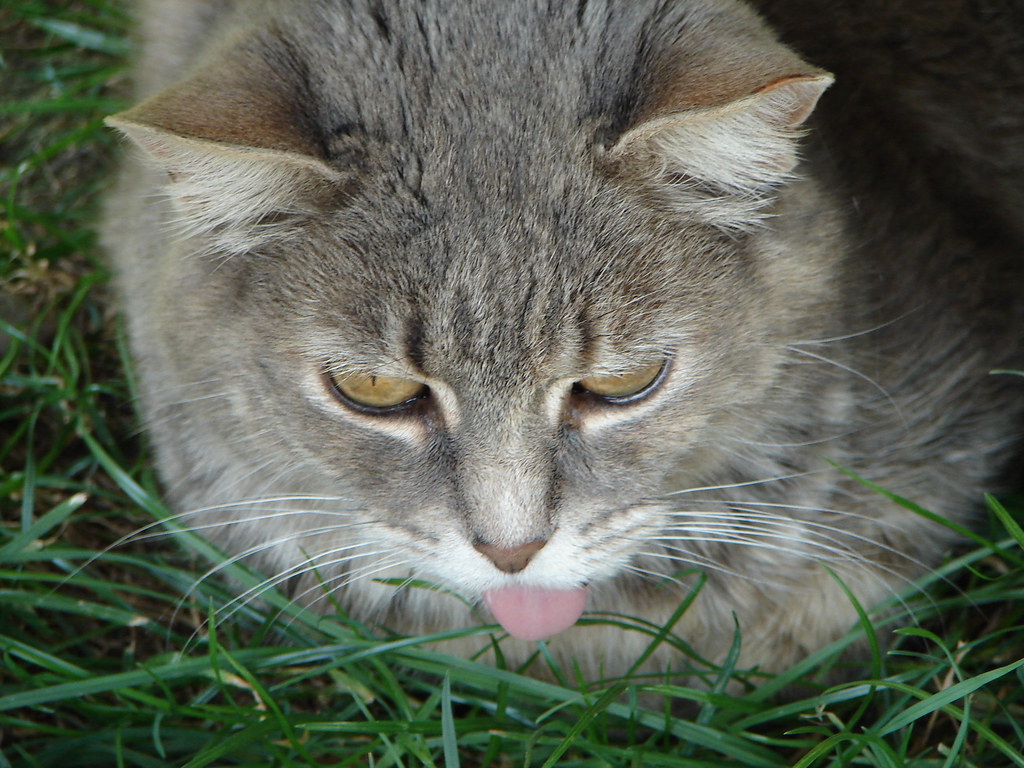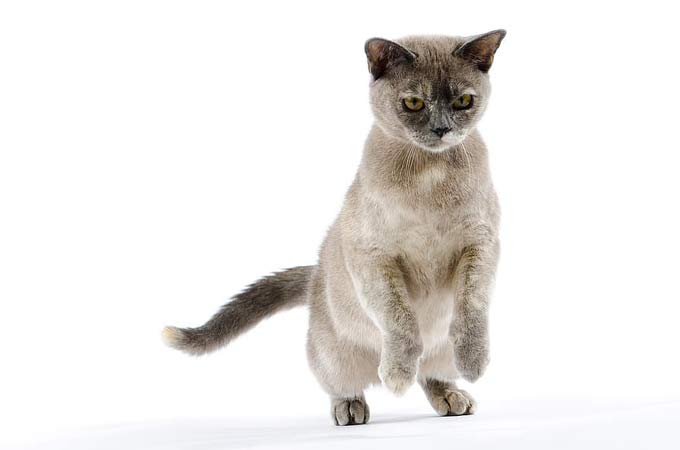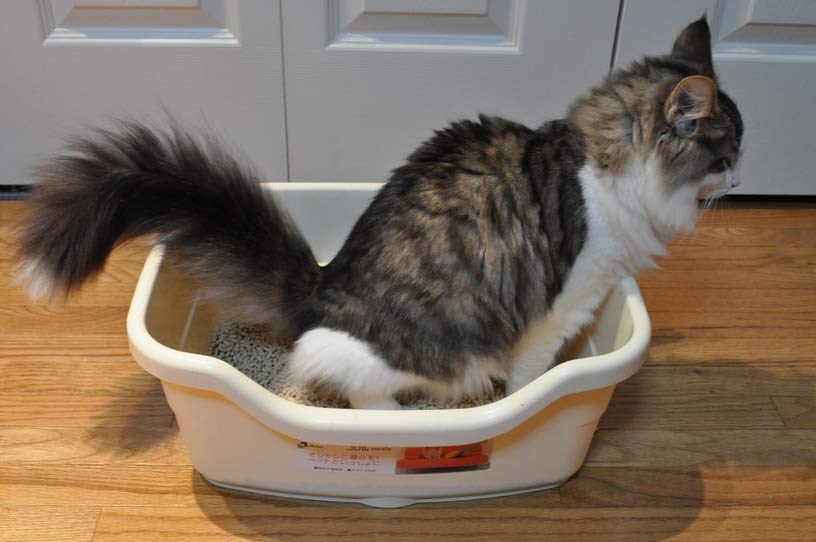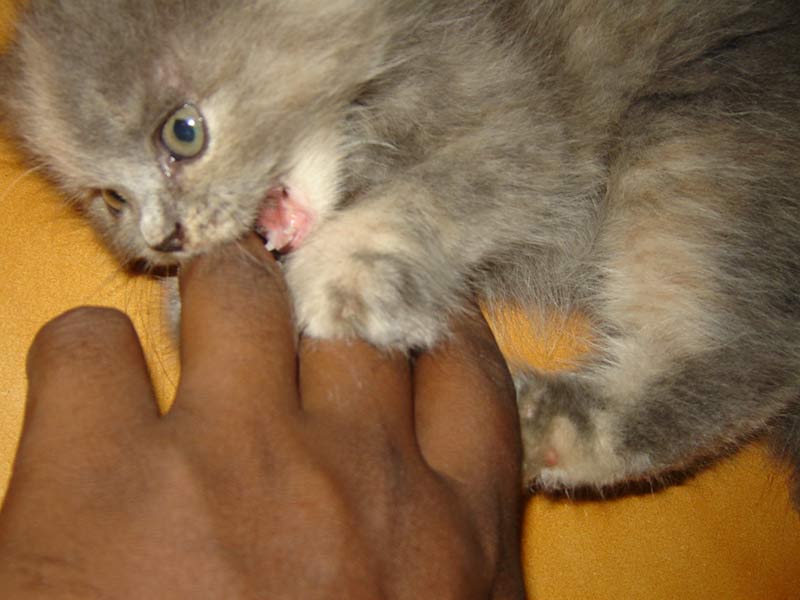What are some of the best cat food items for sensitive stomach vomiting? Internal parasites, a wide range of digestive issues like constipation and inflammatory bowel disease, obstruction brought on by an ingested foreign object, the presence of benign or cancerous gastrointestinal growths, and a wide range of metabolic issues are just a few of the numerous other factors that can cause vomiting in cats.
Why Your Cat is Throwing Up and What To Do
There are a variety of potential causes for cat vomiting, including illnesses, hairballs, and dietary sensitivities. Find out if your cat is vomiting normally or if you need to call the vet.
You’ve undoubtedly heard the wet, down-in-the-throat “glurk” sound made by cats when they’re about to vomit if you’ve spent enough time around them. It may be a hairball. It may be undigested food. Perhaps the liquid is clear or frothy. Regardless of whatever it is, cat vomit does occur, and you have the cleaning products to back it up. However, if vomiting occurs too frequently, there may be more going on than just a cat’s stomach. It could be a symptom of a sickness or condition.
Recognizing What Is Normal
Let’s face it, cats undoubtedly vomit more frequently than we’d like. Vomiting by your cat once or twice a month could not mean anything is wrong. Many cats pass hairballs of fur that they consumed while being groomed, but this shouldn’t happen more than a few times each month. Ernie Ward, DVM, a writer, podcaster, pet nutrition advocate, and veterinarian who works with cats at animal rescue organizations in North Carolina, explains why it’s so important to pay attention to what’s typical for your cat. But if your cat starts vomiting suddenly or often outside of her usual behavior, it might be an indication of a more serious condition.
Chronic vomiting is defined as once or twice-a-day vomiting that is accompanied by weakness, continuous vomiting, stomach discomfort, blood in the stool or vomit, weight loss, or sluggishness.
According to Ward, it’s crucial to understand your cat’s behaviors. Is your cat’s tendency to pass hairballs typical? Is it typical for your cat to sometimes nibble harmless indoor plants or grass outside before puking? These problems could be quickly resolved by altering your cat’s feeding and grooming routines or by taking away temptations from the surrounding area. However, frequent or intense vomiting may indicate a more serious condition.

Find Out What’s Causing Your Cat’s Vomiting
It might be vital to contact a veterinarian for a physical exam and tests to determine what is causing your cat’s vomiting because it can be an indication of a serious illness or just a food error. Be prepared for a lengthy list! Cats’ vomiting can be brought on by:
- Changes in diet or frequency of feeding
- Allergic reactions to food
- Dislocation of the stomach
- Hairballs
- Heatstroke
- Inflammation of the intestines (gastroenteritis)
- Inflammation of the pancreas (pancreatitis)
- Inflammatory bowel disease
- Intestinal parasites
- Liver disease
- Metabolic disorders (kidney disease, etc.)
- Neurological disorders
- Obstructions in the intestines or the throat
- Toxins or chemicals.
- Eating something the cat wasn’t supposed to (people’s food, plants, etc.)
- Eating too fast or too much at a sitting
- Adrenal gland disease
Cat Vomiting: Identification and Therapy
A veterinarian can identify the cause of the vomiting and offer the best course of treatment with a thorough physical examination and the right testing. That can include:
- Antibiotics for infections
- Changes in diet
- Surgery to remove a tumor or foreign body from the throat or intestines
- Various treatments for underlying diseases
Your veterinarian might advise depriving yourself of food and liquids until the vomiting stops, then reintroducing water and bland or easily digested foods gradually. Cats should not be given any more or alternative food while receiving medication for vomiting. Extra food in her diet might make it challenging for your veterinarian to quiet down your cat’s digestive system and check for responses to a particular meal.
Your vet may need to give your cat fluids and advise that water be readily available in the house because vomiting can lead to dehydration. Additionally, your veterinarian could recommend medicine to stop vomiting or treat intestinal irritation.
Although cat owners are unable to identify underlying diseases, your home care following a visit might be crucial, particularly with feeding, if the doctor believes less serious factors are to blame. If you have a food allergy or intolerance, Ward advises you not to give up. He claims that too many individuals quit and continue with their bad habits because they believe that nothing can be done. Or they experience helplessness.
However, you do not lack power. Ward advises cat owners to consider remedies for recurrent vomiting that are unrelated to another illness using technique and strategy. Modifications might be made to:
Diet or feeding frequency changes. If you decide to modify your diet, keep in mind that it is best to do it gradually by including progressively less of the old cuisine.
eating too quickly or at one sitting. Consider feeding your cat smaller, more regular meals and more time to eat (don’t rush them) if this is a persistent issue. Make sure none of your cats is stealing food from the others if you have numerous cats.
Eating too quickly or in one sitting. Consider feeding your cat smaller, more regular meals and more time to eat (don’t rush them) if this is a persistent issue. Make sure none of your cats is stealing food from the others if you have numerous cats.
Hairballs. You may need to assist your cat if it vomits more hairballs than is healthy by giving it a regular brushing, which may be done daily for long-haired cats.
Intolerance to lactose. Do not forget that most cats are lactose intolerant and cannot properly digest cow milk, so even though they may find many dairy items to be pleasant, they may also endure diarrhea or vomiting.
Chemicals or toxins. Make sure your cat can’t access any home dangers that may make them throw up or, worse, be poisoned.
The reason for a cat vomiting might be very natural, like those annoying hairballs, or incredibly strange and more dangerous. Your cat is depending on you to recognize when it occurs and to seek assistance, as are your cat’s veterinarian.
Best cat food for sensitive stomach vomiting
Here are some of the best cat food for sensitive stomach vomiting:
1. Purina Pro Plan Sensitive Skin and Stomach Cat Food
Purina Pro Plan Sensitive Skin and Stomach Cat Food, Lamb and Rice Formula – 7 lb. Bag
One Purina Pro Plan bag, 7 pounds. Cat Food for Sensitive Skin and Stomach, Lamb and Rice Formula
Both rice and oatmeal are simple to digest and pleasant on the stomach. Real lamb is the first ingredient in this high-protein recipe.
fortified for immune and digestive health with certified live probiotics. FOCUS Sensitive Skin and Stomach Lamb and Rice Formula was previously known as
Vitamin A and omega-6 fatty acids help nourish the skin and coat. Specific gut bacteria are fed by natural prebiotic fiber to support digestive health.
antioxidants to support a strong immune system. Taurine and vitamin A assists in healthy eyesight.
2. Hill’s Science Diet, Grain-Free Dry Cat Food
Hill’s Science Diet, Grain Free Dry Cat Food, Adult, Sensitive Stomach & Skin, Salmon & Yellow Pea Recipe, 13 lb. Bag
Are you looking for grain-free cat food that is easily digestible? Hill’s Science Diet Sensitive Stomach & Skin Grain Free dry cat food offers targeted nutrition for gastrointestinal health and the best possible skin care. Prebiotic fiber is included in this all-natural cat chow to feed the intestinal microbes of adult cats and regulate their microbiome. A natural fiber that is devoid of grains aids in digestion and enhances litter box cleaning in cats. The new Science Diet design offers even more reasons to adore it. We’ve also changed the names, kibble forms, and formulations of some of our goods.
3. Whole Life Pet Recover. Bland Diet for Cats.
Whole Life Pet Recover. Bland Diet for Cats. Vomiting, Stomach Distress, or Diarrhea Relief. Chicken and Rice. Ready in Minutes – Just Add Water
Shake the bag to spread the chicken and rice equally before each usage. We advise dividing the recommended daily feeding quantity into two to three equally sized meals staggered throughout the day. Use an ordinary 8-ounce measuring cup to measure out the serving. Stir and cover after adding an equal amount of hot water. Food can be served in 5 minutes, but it should cool before feeding.
TIPS FOR FEEDING: You may change the amount of water in the food to give your cat the correct consistency. By adding more water, you may give your cat’s food a porridge-like texture and help it stay hydrated, which is crucial when it’s time for vomiting or diarrhea. The daily meal for Whole Life Pet Recover, Bland Diet for Cats can be prepared in its entirety at once, and any leftovers can be kept in the refrigerator. Some cats are picky about the temperatures and textures of meals that are kept in the refrigerator, so you may create just what you need for each meal.
4. Royal Canin Feline Health Nutrition Sensitive Digestion Dry Cat Food
Royal Canin Feline Health Nutrition Sensitive Digestion Dry Cat Food
Cats are excellent at disguising intestinal problems. However, their litter box may include hints. Your adult cat may have a sensitive stomach, particularly a sensitive lower digestive tract if she frequently passes foul-smelling, watery feces. Consult your veterinarian immediately if you suspect that your cat is having trouble adequately digesting its food. Sensitive Digestion by Royal Canin Dry cat food is formulated nourishment to assist your cat’s delicate digestive system. Prebiotics and highly digestible proteins aid in maintaining a balanced intestinal tract and a healthy digestive system so that your feasting cat may take pleasure in their meal without discomfort.
Cat kibble comes in three different forms for optimum hunger appeal. They can also consume smaller meals to help their digestive sensitivity because this formula has a higher energy density. For a dinner your cat will like, try combining this dry food with Royal Canin Digest Sensitive Wet Cat Food recipes. With more than 50 years of scientific investigation and observation, Royal Canin has continued to provide specialized nutrition to enhance the beauty of every pet.
5. Blue Buffalo Tastefuls Sensitive Stomach Natural Adult Dry Cat Food
Blue Buffalo Tastefuls Sensitive Stomach Natural Adult Dry Cat Food, Chicken 7lb bag
Have a cat in your household that is delicate? Give your cat this carefully prepared, stomach-friendly dry cat food. This dish is free of corn, wheat, and soy as well as chicken by-product meals. Additionally, the prebiotic fiber in this dish helps to maintain digestive health.
BLUE for Cats, a product designed to promote your feline friend’s health and well-being, contains only the purest natural components, including Deboned, delicious chicken that is high in protein. nutritious vegetables and healthy grains. NO poultry or chicken byproduct meals.



